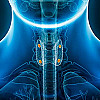Changing the rules on CPR for cardiac arrest
New studies show that skipping mouth-to-mouth breathing and focusing on pressing the chest boosts survival and brain protection.
When a person suddenly collapses from a cardiac arrest, cardiopulmonary resuscitation (CPR) is his or her only chance of surviving. As traditionally taught, this type of emergency first aid has two main parts: pressing the chest (and thus the heart) to keep blood circulating through the body, and mouth-to-mouth breathing to supply oxygen. CPR guidelines call for alternating chest compressions with short breaths, in a ratio of 30 to 2. Some experts are calling for a simpler, easier procedure that focuses almost exclusively on compressing the chest.
To continue reading this article, you must log in.
Subscribe to Harvard Health Online for immediate access to health news and information from Harvard Medical School.
- Research health conditions
- Check your symptoms
- Prepare for a doctor's visit or test
- Find the best treatments and procedures for you
- Explore options for better nutrition and exercise
I'd like to receive access to Harvard Health Online for only $4.99 a month.
Sign Me UpAlready a member? Login ».
Disclaimer:
As a service to our readers, Harvard Health Publishing provides access to our library of archived content. Please note the date of last review or update on all articles.
No content on this site, regardless of date, should ever be used as a substitute for direct medical advice from your doctor or other qualified clinician.












